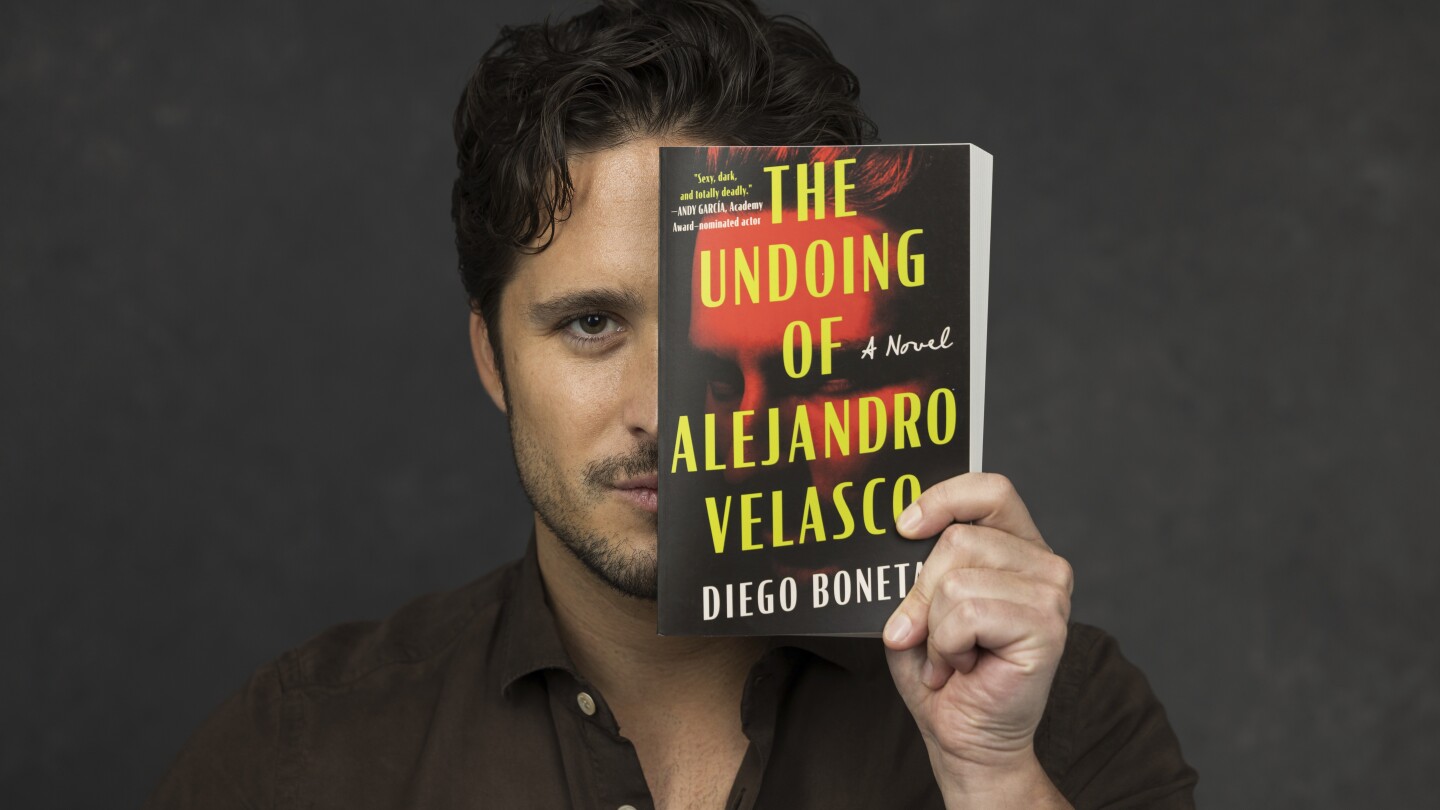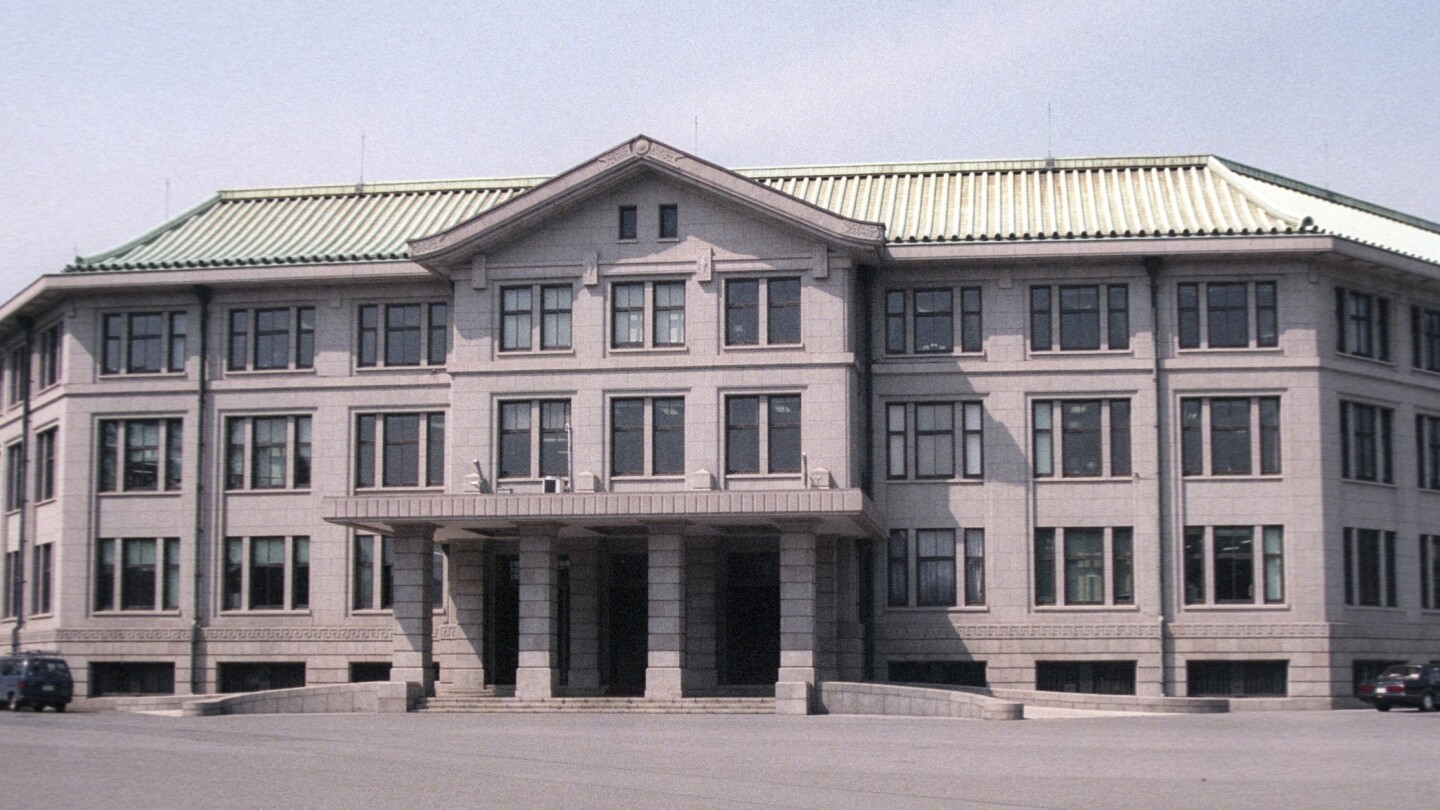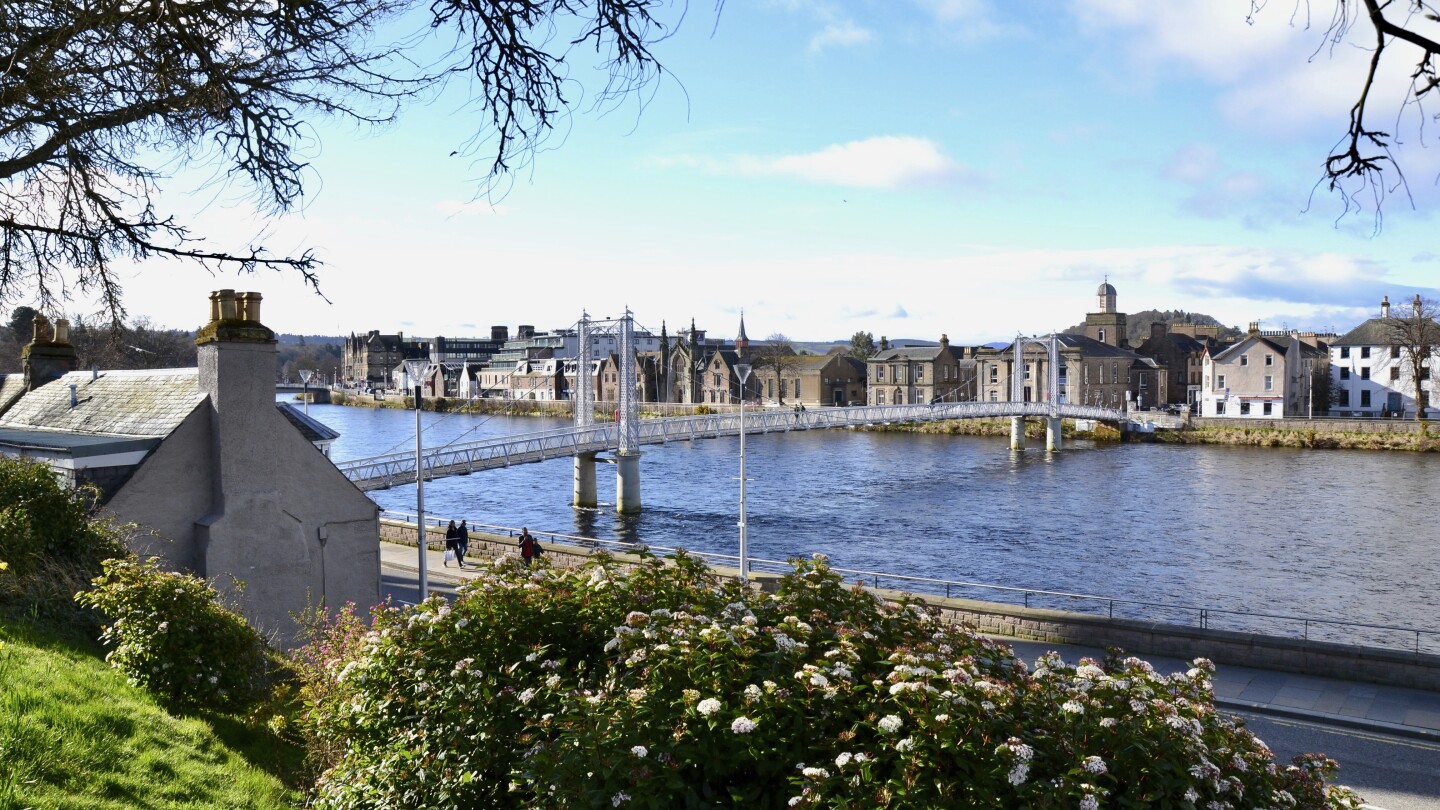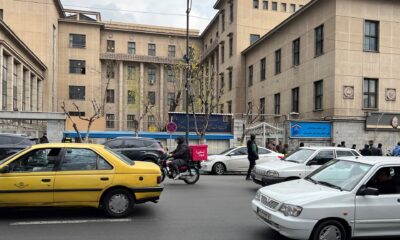Lifestyle
These papal tailors aren’t expecting a traditional order for new cassocks to outfit the next pope

ROME (AP) — Two papal tailors and no conclave orders.
The conclave that begins next Wednesday to elect a successor for Pope Francis is the first in 46 ½ years for which the Vatican hasn’t ordered a set of cassocks for the new head of the Catholic Church — at least from the two best-known papal tailors.
That isn’t stopping Ranieri Mancinelli, who opened his ecclesiastical tailoring shop near the Vatican in the 1960s, from making three simple white cassocks just in case: the traditional small, medium and large sizes to cover all possible heights and girths.
“I’m doing this on my own to be able to present these cassocks for the next pope, without knowing who he will be,” Mancinelli said.
Gammarelli, another family-run ecclesiastical tailor near the Pantheon in the historic center, has a paper trail showing it has received cassock orders for every conclave since the beginning of the 20th century — and probably far earlier. Gammarelli has been making garments for priests, bishops and cardinals since 1798.
The last time no pre-conclave order came in to the Vatican’s tailor of choice, Gammarelli, was October 1978, when cardinal electors voted a successor to Pope John Paul I, who died after 33 days as pontiff, said Lorenzo Gammarelli, representing the sixth generation of the family business.
Gammarelli won’t speculate why no order was made this year, but Italian media suggests the Vatican has enough unworn cassocks on hand, and is honoring Pope Francis’ message of environmental and economic sustainability.
“Obviously, we’re a little sorry, because in the sadness caused by the death of the Holy Father, we still would have the beautiful thing of having to make the trousseau for the new one. Not this time,” Gammarelli said.
The Vatican declined to comment on what is being viewed as the great papal cassock race. “I don’t think I need to speak on behalf of businesses,” said Vatican spokesman Matteo Bruni. “Not every curiosity needs to be answered.”
The papal trousseau
For a pope’s first encounter with the flock, the basic garment is the hand-stitched white wool cassock with white cape and wide silk sleeves. The cassock is fastened by silk buttons and worn with a silk brocade sash with gold fringe. All popes, until Francis, had this sash later embroidered with his papal seal.
Francis also eschewed the classic burgundy red mozzetta, a short elbow-length cape worn for formal occasions, and a gold embroidered stole, not only the night of his election but throughout his papacy.
The papal garb is finished with a white “zucchetto,” or skullcap that is also worn by cardinals in red and bishops in purple.
When they are called on to provide a conclave order, Gammarelli also provides shoes in an array of sizes so the new pope will be comfortable when presented to his flock. After that, Gammarelli said, “shoes are a very personal matter.”
In keeping with the secrecy of the conclave, Gammarelli never reveals papal prices.
Sizing up the next pope
While the world speculates on who will be the next pope, Gammarelli’s job is more practical. The family has a system to best outfit the unknown successor, using data from their cardinal clients and sizing up cardinal candidates who are not.
“We consider who, in our opinion, could be elected,” Gammarelli said. “We pull out their measurements, and … we make three cassocks that would more or less fit all of them.’’
Balcony mishaps
Their best guesses are sometimes off.
Gammarelli said they never imagined that Polish Cardinal Karol Wojtyla would become pope in October 1978. They had considered Argentine Cardinal Jorge Mario Bergoglio a candidate in 2005 (when Benedict XVI was elected) but not in 2013, when Bergoglio became the church’s first Latin American pope.
Back in 1958, the portly John XXIII appeared on the balcony of St. Peter’s Basilica with safety pins holding together the back of his cassock, after a too-small size was mistakenly grabbed, forcing aides to open the back.
Gammarelli said that throughout Francis’ 12-year papacy he tried to persuade the pope to wear white pants under his cassock. But Francis stuck with the black trousers of a priest, a reminder to himself and everyone that he was a pastor at heart.
Francis’ unadorned style
Mancinelli, at his shop just steps from the Vatican, has made cassocks for the last three popes: St. John Paul II, Pope Benedict XVI and Pope Francis.
He got to know Benedict when he was a cardinal, living near Mancinelli’s shop. Francis later invited him to his apartment in the Santa Marta residence, marking “the beginning of a very pleasant encounter period.”
While Gammarelli won’t make the cassocks on speculation, Mancinelli is making three to give to the Vatican, in Francis’ simple, unadorned style.
“Compared with the other two, Francis preferred much simpler and much more practical things,” he said, also taking costs into account.
Only after the words “Habemus Papam!” are announced from the balcony of St. Peter’s Basilica will it be clear whether the Catholic Church’s 267th pontiff will follow Francis’s unembellished example or will bring back traditional papal trappings, like flashes of red.
____
AP video journalist Silvia Stellacci contributed to this report.
Lifestyle
Diego Boneta on debut novel ‘The Undoing of Alejandro Velasco’

LOS ANGELES (AP) — Diego Boneta had grown tired of Hollywood’s obsession with narco storylines for Latinos. The actor decided he would provide some new source material with his debut novel, out Thursday, a self-described “murder mystery, sexual thriller” set around a fictional business dynasty.
“As someone who’s from Mexico City, seeing all these stories that are Mexican stories, most of them have been about narcos or border crossing. And that is part of our culture. But that’s only this,” the actor said, gesturing to indicate it only makes up a small portion of Mexico. “So why don’t we show the other stuff?”
Boneta, best known for portraying Latin pop icon Luis Miguel in Netflix’s 2018 biopic series and co-starring in “Rock of Ages,” is now fighting against these stereotypical portrayals by unveiling his debut novel, “The Undoing of Alejandro Velasco.” The Amazon Crossing book is publishing in English and available in Spanish on digital and audio formats. It is also slated for a television adaptation.
“I feel weird calling myself an author. I feel like I’m a storyteller,” said Boneta, 34, who is also a producer and a musician. “It’s the most personal thing I’ve ever done, so it’s really close to my heart.”
The novel centers on a mysterious man named Julian Villareal, who sets out to solve the mystery behind his friend and tennis rival Alejandro’s sudden death but finds himself in a series of twists and turns thanks to the Velasco family’s wealth and business ties.
“It’s in the vein of ‘The Talented Mr. Ripley’ meets ‘Match Point,’ set in San Miguel de Allende, full of plot twists,” Boneta said.
Boneta says he wanted to set the novel in San Miguel de Allende to showcase a different side of Mexico to mainstream audiences. He grew up visiting family in the historic city and calls it the “Florence of Mexico.”
“I really wanted it to feel like it was coming from my heart. So, I had to write about things that I was really passionate about, and San Miguel is one of them,” he said. “It’s truly a magical town.”
Boneta did not plan on adding author to his list of attributes, until his sister and producing partner, Natalia González-Boneta, suggested that they create their own intellectual property. Boneta will star as Julian in the Amazon Studios MGM series adaptation, which is currently in development. The actor and his team developed the novel and the series in tandem, though they put a pause on the series during the 2023 Hollywood strikes. Boneta says that he crafted the character to challenge himself when bringing the story to the screen.
“I love transformative roles. I love the chameleon aspect of acting,” he said. “That’s what we tried to do with Julian and having the con man not be the introvert, but be like this like bon vivant guy. He’s so worldly and says he has so much money, but is he really who he says he is?”
Julian is a role Boneta dreamed about as a kid when he failed to see himself represented on screen. He still remembers growing up and wondering why Batman wasn’t someone who looked like his family members.
“To me, that’s the most powerful way of creating an exclusive environment,” he said. “If you’re like, ‘Oh, we’re doing the Latin Batman, and he’s gonna have a mariachi, sombrero and a lucha libre mask and maracas.’ I’m like, ‘Dude, I don’t wanna see that.’ I want the real Batman to happen to be a Latin guy. You don’t even have to make a thing out of it.”
Lifestyle
Japan’s imperial palace fires an employee for stealing cash from the household

TOKYO (AP) — Japan ‘s Imperial palace said Thursday that it has fired an employee for stealing cash totaling 3.6 million yen ($24,900) from Emperor Naruhito and his family over more than a year.
The Imperial Household Agency identified the suspect as an employee in their 20s who was one of about 80 attendants assigned to the palace or the agency building to serve daily needs of Naruhito and his family. The theft is an embarrassment for the royal household and its officials said it’s been unheard of in modern history.
The case surfaced in March during an internal investigation by the IHA that started in January when an assistant manager of the department noticed a discrepancy between the cash in the safe and the accounting book.
When an agency official detected the loss of 30,000 yen ($207) in late March, the suspect who just ended an overnight duty was asked about it and admitted stealing cash, citing financial difficulty, the agency said.
In all, the suspect admitted to stealing a total of 3.6 million yen in a number of occasions from November 2023 to late March this year, and later returned the money by mid-April, it said.
The money was part of 324 million yen ($2.24 million) annual budget allocated as living expenses for the emperor, his wife Masako, their daughter Princess Aiko and Naruhito’s parents — former Emperor Akihito and Empress Michiko.
The IHA said it had filed a criminal complaint to the palace police and formally dismissed the employee. The assistant manager in his 40s, who initially noticed the cash irregularity in January, was given a one-month salary cut over his lax accounting management, the IHA said.
IHA chief Yasuhiko Nishimura said the theft by the employee as a public servant and a staff serving the Imperial family was “unthinkable” and “extremely regrettable,” and apologized to the emperor and his family, NHK public television reported.
He pledged to tighten discipline among the palace staff, according to media reports.
Lifestyle
The Scottish Highlands offer visitors a mix of history and modernity

INVERNESS, Scotland (AP) — As we crossed the Keswick Bridge into the rolling hills outside Inverness, green fields of early-spring barley still had months to grow until harvest. The grain will be sent to a nearby malting factory and eventually made into whisky at some of Scotland’s 150-plus distilleries.
Interspersed among the barley fields were yellow rows of flowering rapeseed, used to make cooking oil, and herds of grazing sheep that seemed to outnumber people.
It was a tableau I thought would have been the same for a thousand years. But rapeseed only started to be planted in the 1970s, and at one point there were a lot more people than sheep, said my guide, Cath Findlay.
During the tumultuous hundred years of the Highland Clearance, landowners kicked out most of the tenants and replaced them with sheep, which were more valuable to them than people, Findlay said.
“At the time, the British government were fighting all over the world, and they needed wool for uniforms and meat for their soldiers,” she said. “So in much of the Highlands, we see that it’s hilly, and there’s lots of sheep.”
The history lesson resonated because it was obvious throughout my week in Scotland that the past is very much present. But Inverness and its environs are hardly stuck in the past.
Small, but thriving
Inverness is the gateway to the Highlands, a rugged, windswept region of northwest Scotland. The small but thriving city, one of the fastest-growing in the United Kingdom, is best known as the jumping-off point for mystical monster hunters attracted by the legend of Loch Ness.
In recent years, however, it’s carving out an international identity beyond whisky, Nessie and tartan plaid, though there still is plenty of that too.
The center of town can be crossed on foot in a leisurely 15 minutes. Overlooking a cliff at one end, the red sandstone Inverness Castle was covered in scaffolding when I visited this spring. A renovation to turn it into an interactive attraction focused on stories of the Highlands is expected to finish this year.
Right in the center is the recently refurbished Victorian Market, a once bustling hall that was on the verge of closing anyway when the COVID lockdown arrived.
Town leaders took advantage of the moment to breathe new life into it. The market now includes a mix of craft stores, cafes, jewelry shops, barbers and one remaining butcher (try their meat pies, which Findlay said are better than homemade).
The seafood market was replaced with a lively food hall, with the acclaimed Bad Girls Bakery as its first tenant. Following soon were innovative but affordable seafood at The Redshank, pulled meat at Ollie’s Pops, vegan at Salt N Fire, and more.
Now, there is live music every day and 75,000 people pass through the market during busier weeks — nearly the size of the population of the entire city.
“It was dead as a doornail, and now it’s the beating heart of the town,” Findlay said.
Just up Church Street, the main drag, The Walrus and Corkscrew opened soon after as the town’s only wine bar. And nearby at Black Isle Bar, wood-fired pizzas come paired with one of 24 organic beers that the owners brew on their own farm just outside town.
A story with your meal
In the nearby village of Beauly, the Downright Gabbler guesthouse has four suites and a full-time storyteller.
Garry Coutts and his wife, Jane Cumming, opened with a small dining room and their daughter Kristy as chef. It’s not a restaurant, exactly, but they hold several themed events each week that combine Coutts’ encyclopedic knowledge of Scottish history and legend with their daughter’s modern take on traditional dishes.
Among the events is the regularly held Highland Banquet, six courses that trace the region’s people from prehistory to modern times. Venison carpaccio with pickled blackberries, for instance, was inspired by hunter-gatherers, although Coutts noted they ate much more seafood and foraged vegetables than deer.
“They’re very difficult to catch,” Coutts quipped. “They run away!”
The courses unfolded with stories peppered throughout, ranging from some illegal origins of Johnnie Walker’s whisky blends to the couple’s distaste for Las Vegas. Also on the table was a deck of cards, each printed with the name of a prominent Scot to be drawn at random for a story told on the fly.
I pulled Alexander Graham Bell, who likely holds the record for having the most challenges from competitors for patent infringement, Coutts said.
“It’s amazing the number of Americans that come in here and tell me he’s not Scottish,” he said.
If you go
Where to stay: Lodgings include the Ness Walk Hotel, a modern, five-star property a 20-minute walk from the center, and the Heathmount Hotel, a cozy, independent, three-star option within a 10-minute walk of Church Street.
Travelers tip: For such a small town, there is a shocking amount of live music. Performers attract crowds at Hootananny and The Highlander every night, and most nights at MacGregor’s, among other spots. First, stop into The Malt Room for a whisky flight chosen from their list of 350 single-malts.
Find more information on visitscotland.com.
___
EDITOR’S NOTE: Albert Stumm writes about travel, food and wellness. Find his work at https://www.albertstumm.com
Scottish history meets modern as the Highlands grow beyond whisky and Loch Ness
-

 Lifestyle2 days ago
Lifestyle2 days agoAfter a year of turmoil, The Washington Post is taking note of its journalism again
-

 Africa2 days ago
Africa2 days agoResearchers study using planes to cool the earth amidst global warming
-

 Africa2 days ago
Africa2 days agoBomb Blast Kills 26 in Northeast Nigeria
-

 Conflict Zones2 days ago
Conflict Zones2 days agoAbout 600 North Korean soldiers killed in war in Ukraine, lawmakers say | Russia-Ukraine war News
-

 Asia2 days ago
Asia2 days agoFall of Saigon: US officers who broke rank to save lives recall final days of Vietnam War 50 years on
-

 Europe1 day ago
Europe1 day ago16-year-old suspect detained after 3 killed in shooting in Sweden
-

 Middle East1 day ago
Middle East1 day agoIran hangs man convicted of spying for Israel’s Mossad | Espionage News
-

 Sports2 days ago
Sports2 days agoMaya Merhige: American teenager withstood thousands of jellyfish stings during a 14-hour swim across the Cook Strait




